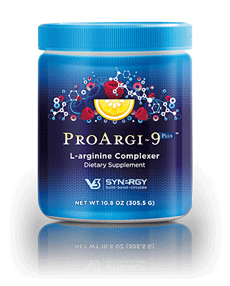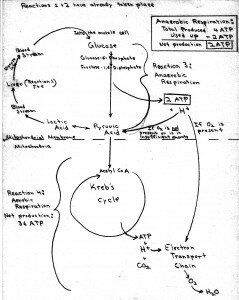My friend Bert Middleton asked me to produce a series of videos on high altitude training specific to cardiovascular health and function. Why? Because he’s always looking for ways to improve his legs and lungs to get the most out of his mountain biking and powder skiing.
What I share in these videos also applies to every person because at the heart of all activity is your cardiovascular system. Foundational to your cardiovascular system is your endothelium. This one-celled organ lines all of your heart, arteries, capillaries, and veins. It ultimately determines the health of your entire circulation and plays a critical role in your overall health and wellness.
Blood circulation and oxygenation is key to high altitude training. Bert is 52 and has seen a remarkable improvement in his high altitude sports. In his own words,
“This blue powder has made a major impact on accelerating my recovery time so that I can mountain bike day after day without the fatigue that I used to experience. I can charge a lot harder and a lot longer before I come to the end of my strength and stamina on my mountain bike.”
Bert is also seeing that this directly applies to his powder skiing now that the ski season has opened in the mountains of Colorado. If you’re looking to maximize your performance and recovery in mountain biking, snow skiing, or any type of high altitude sport, then watch and listen to these three videos.
The One Critical Organ That Makes ALL the Difference in High Altitude Training!
Most high altitude athletes concentrate on improving their heart and lung function. While these two organs are important, there is another organ that most never even consider in their training program. Yet, this one critical organ can make ALL the difference in your high altitude training. This organ is your endothelium!
By properly repairing and nourishing this organ you can experience major improvements in your circulation resulting in:
18 times more energy with less lactic acid production for quicker recovery!
Interested?
Then watch this video to learn how critical your endothelium is to high altitude training:
Learn How Nitric Oxide Maximizes Your High Altitude Training, Performance, and Recovery!
As we shared in the previous video, your endothelial cells produce nitric oxide – the master signaling molecule of your entire cardiovascular system. This has a major impact on improving circulation and the ability of your blood stream to deliver needed oxygen and nutrients.
Foundational to every high altitude training program is your ability to fuel muscle tissue with the oxygen and nutrients needed to sustain your efforts.
In this next video we’ll discuss how nitric oxide maximizes cardiovascular function to deliver needed oxygen for significant energy production while limiting the negative effects of lactic acid. This enhances your performance and recovery in high altitude training:
The Daily Consumption of These Two Amino Acids Makes a Significant Difference in High Altitude Training!
As you learned from the above video, your endothelium is critical to cardiovascular health. While your heart is important, it’s your endothelial cells and their ability to produce nitric oxide that truly controls the health of your cardiovascular system.
In this next video, we’ll discuss the two natural amino acids that must be part of your daily diet. Both are important, but when properly taken together they make a significant difference in your high altitude training, performance, and recovery:
Can a Clinically Proven Product Significantly Impact Your High Altitude Training?
I believe it can. Just as ProArgi 9 Plus has benefited the cardiovascular system of thousands of patients who have cardiovascular challenges, it can also benefit the cardiovascular system of high altitude athletes. The repair and nourishment of your endothelial cells to help them properly produce nitric oxide will improve circulation. Improved circulation results in your body’s ability to work at a much higher aerobic base to create more energy for all types of high altitude training programs.
Additionally, you will experience less lactic acid production, which is detrimental to all high altitude sports.
Just as Bert Middleton found, this powerful blue powder called ProArgi 9 Plus can be used to enhance your high altitude training, performance, and recovery. It will also become a key factor in improving your overall health.
As I said in the beginning, if you apply the information shared in these videos, then I guarantee you’re going to see significant improvements in all phases of your high altitude training. You’re going to experience:
- Accelerated Recovery Times!
- Greater Strength and Stamina!
- Greater Lung Function and Oxygen Delivery!
- Significantly More Energy Production!
- Reduced Lactic Acid Formation!
I firmly believe the product ProArgi 9 Plus, formulated by Dr. J. Joseph Prendergast, could be a real benefit to you. It’s why I’ve chosen to endorse this product and offer it to those who want to make a significant difference in their high attitude training.
If you would like to try ProArgi 9 Plus, with a 100% Satisfaction Guarantee, then please Click Here!
Together, we can help you see significant improvements in your high altitude training, performance, and recovery so that you can maximize your investment in your high altitude sport.
Dan Hammer
Dan Hammer has a background in biology, chemistry, and exercise physiology. He used to run one of the largest health club operations in the Chicagoland area and has been helping people with their wellness issues for more than 25 years.


 Addressing the
Addressing the
 Addressing the
Addressing the ew level of strength training. But first a little background.
ew level of strength training. But first a little background. Addressing the
Addressing the I was going through some storage bins over the weekend and came across this crazy drawing of energy production you see on the left. It’s from my biochemistry class in college, and it has a direct application to cardiovascular health. In fact, once you understand it you will realize how important good circulation is to your health and your ability to produce energy.
I was going through some storage bins over the weekend and came across this crazy drawing of energy production you see on the left. It’s from my biochemistry class in college, and it has a direct application to cardiovascular health. In fact, once you understand it you will realize how important good circulation is to your health and your ability to produce energy.